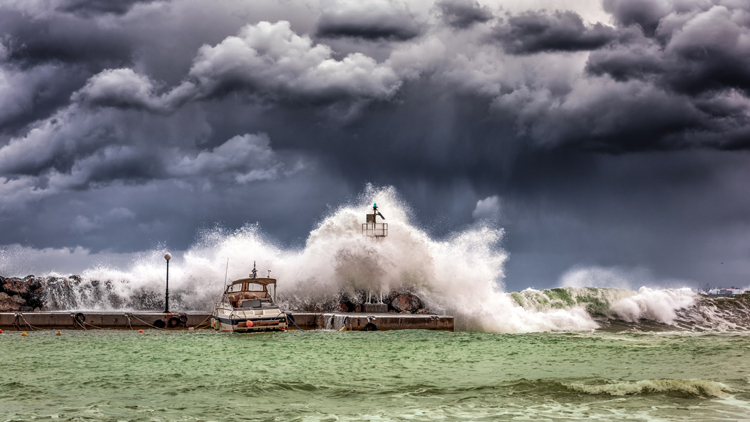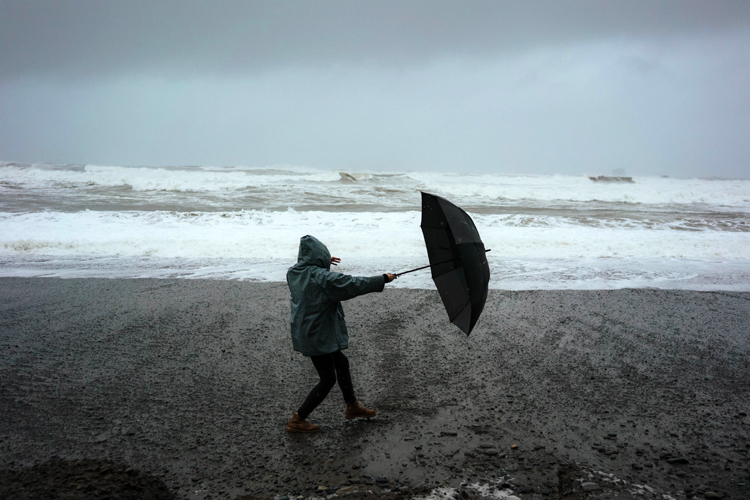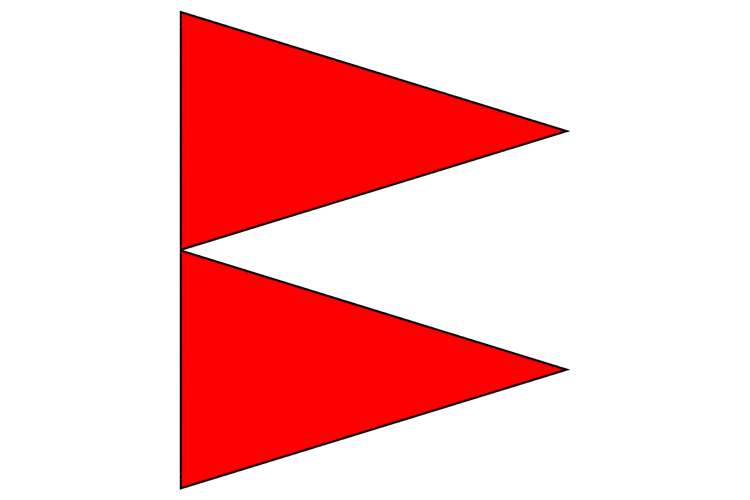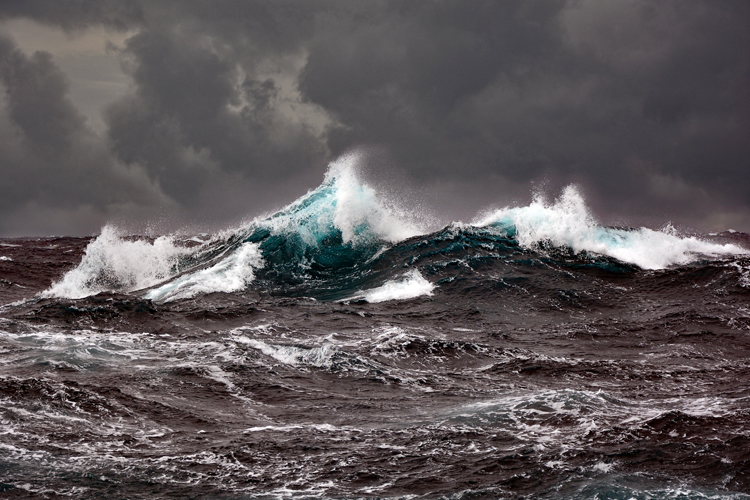Gale warnings are notifications issued by national meteorological agencies that save lives and minimize property damage and loss. Here's how these extreme weather alerts work.
A gale is a particularly strong and sustained surface wind in the 34-47-knot range (39-54 miles per hour or 63-88 kilometers per hour) experienced in coastal regions.
The Beaufort Wind Force Scale is an empirical wind speed model developed in 1805 by Sir Francis Beaufort.
It allows regular people without anemometers or meteorological devices to assess wind speed on land and sea.
In other words, non-weather experts can determine wind conditions and potential hazards in real-time by observing the behavior of the elements.
Wave height, the formation of whitecaps at sea, the motion and breaking of trees and leaves, and structural damage to homes are some signs that help estimate the current wind speed.
The Beaufort Wind Force Scale goes from 0 to 12, i.e., from 0 to over 118 kilometers per hour of wind.
So, a gale wind sits between 7 and 10 on the wind measuring scale created in the 19th century.
The word "gale" derives from the Old Norse expression "gala" (to scream). In Middle English, a gale meant any wind - hurricane strength or breeze.
But although the wind scale designed by Sir Francis Beaufort can be helpful if we're outdoors and without any access to communications, it will never be a precise measurement tool.

How Are Gale Winds Formed?
As we've seen above, a gale-force wind is a strong and persistent wind that might last an entire day and blow you off your feet.
A gale is more common in - but not limited to - coastal regions, including lakes, estuaries, and inland seas.
Gale winds may occur when very high-pressure and very low-pressure systems are close to each other and the topography near the shoreline is favorable.
So, a gale is a fast air movement from a high to a low-pressure zone.
For instance, in San Francisco, a slight breeze funneled and compressed between the hilly banks on both sides of The Bay and through the bridge can create a gale-force wind.
In South Africa's Cape Town, the same scenario occurs between Table Top Mountain and Signal Hill.
Who Issues Gale Warnings?
The entities responsible for issuing official weather reports and forecasts are national meteorological agencies.
Organizations like the National Weather Service (USA), Met Office (UK), Bureau of Meteorology (Australia), and Meteorological Service of Canada are responsible for:
- Providing real-time weather reports;
- Providing meteorological forecasts;
- Issuing warnings of hazardous weather;
- Providing safety, protection, and general information regarding weather-related events;
- Anticipating environmental hazards;
- Delivering shipping forecasts;
- Providing flood forecasting reports;
- Assessing air quality;
- Predicting volcano ash clouds for the aviation industry;
- Developing and fine-tuning weather prediction models;

Gale-Force Wind in the Beaufort Scale
Different countries use different criteria to break a gale down into categories.
The original 1805 Beaufort Wind Scale identifies four types of gale winds, from 7 to 10; today, meteorologists identify a near-gale wind at 7 and then gales in the 8 and 9 categories.
Gale winds may start generating moderately high waves with breaking crests forming spindrifts, breaking twigs from trees, and shaking cars on the road.
Then, at an intermediate level, they will create high waves with dense foam, and wave crests start to roll over. Construction and temporary road signs get blown away.
Finally, a gale wind at its peak generates big waves and vast patches of foam across the ocean surface.
There will be significant amounts of airborne spray, and trees will be uprooted or broken off. In addition, house roofs start to peel off.

Types of Communication
A gale warning is a public alert issued by national weather services.
In the United States, a gale warning is a maritime-only caution notice; the land-only equivalent is the wind advisory.
Meteorological forecast authorities typically only issue these notifications when they expect extraordinary and sustained wind events of this strength.
So, gale warnings are promptly issued when winds blow on average in the 30-52-knot range (35-60 miles per hour or 56-96 kilometers per hour).
Nowadays, weather organizations issue maritime alerts via:
- FM broadcasting;
- Television;
- VHF radio;
- Digital Selective Calling (DSC);
- Satellite services;
- Official websites and apps;
- Social media;
- Newspaper;
- Flag systems;
- Short message service (SMS)

Visual Signals
Gale warnings aim to reach the general population but also ships out at sea, recreational sailors, fishing boats, and other maritime-related activities and professionals.
In the United States, the National Weather Service's Coastal Warning Display Program developed an information system featuring flags, pennants, and colored lights.
Their goal is to warn people who may be out at sea or near the coastline of hazardous conditions - occurring or predicted.
The daytime display signal for a gale warning is two red pennants, and the night signal is white and red lights.
These visual alerts are triggered when winds blow over ten-minute periods at around 34-47 knots (39-46 miles per hour or 63-87 kilometers per hour).
The American meteorological service also runs a watch for increased risks of gale-force wind events when their timing and location are still uncertain.
Gale warnings are very common and frequent.
Sports participants, including surfers, windsurfers, kiteboarders, and recreational sailors, are advised to stay out of the water during these weather phenomena.
